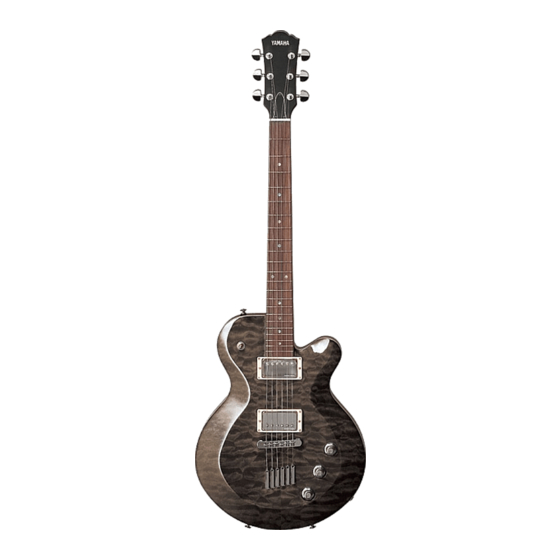Yamaha AES1500 사용자 설명서 - 페이지 4
{카테고리_이름} Yamaha AES1500에 대한 사용자 설명서을 온라인으로 검색하거나 PDF를 다운로드하세요. Yamaha AES1500 11 페이지. Owners manual
Yamaha AES1500에 대해서도 마찬가지입니다: 브로셔 (40 페이지), 소유자 매뉴얼 (14 페이지)

Classical Guitars
Classical guitars use strings made of nylon. Strings 1 to 3 are made of plain
nylon, while strings 4 to 6 have a nylon core with a steel winding. Classical strings
are lower in tension than steel strings, which means less stress on the neck.
Classical guitar strings are classified not by gauges, but by tensions: low,
medium and high. The difference between these tensions is relatively small,
but players may find they prefer a certain tension. It's best to experiment to
see which one is best suited for you.
Cleaning the Guitar
Wipe your guitar down regularly with a clean, dry and soft cloth. It's not
necessary to use polish every time, as this can lead to a buildup of wax or
other materials. Occasionally, you can use guitar polish to bring the shine out
of the finish.
Over time, the fingerboard may get a layer of build-up on it—sweat and dirt
from your hands. Cleaning the fingerboard after you play will help to prevent this.
Setting Action and Intonation
The "action" of a guitar is the distance between the strings and the fretboard.
This can vary depending on the player's preference. A higher action may suit
a player who plays hard, or who wants a clear, punchy sound. A lower action
may make the guitar easier to play, but also increases the likelihood that there
will be spots on the neck where the notes do no not ring clearly.
The action is determined by a combination of a number of factors: the
height of the bridge and nut, the curve of the neck controlled by the truss rod
(not on classicals), and the levelness of the frets. All of these factors must be
adjusted, and depend on one another.
Your Yamaha guitar is designed to have good action right out of the box.
